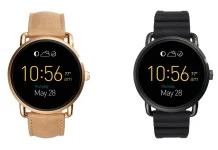With the latest technology camera, researchers are all set to monitor the moves of the great white sharks. Researchers have attached an advanced camera to the first dorsal fin of a white shark. This special camera is capable of recording video for 10 long hours in low-lights and it can resist temperature in the depths too. And the aim of the biologists is to understand what the sharks do deep inside the deserted part of the Pacific Oceans during winters.
These great white sharks are often found along the coastline from Central to Baja California. Each year these sharks travel about 30-40 days to reach 3000–5000 meters deep into the Pacific Ocean. And finally reach a spot which is halfway between Mexico and Hawaii. The spot dubbed as “white shark café,” is an area smaller than Panama.
“I think of it like Burning Man. You have all these Bay Area white sharks, and every year they head out into this white shark café, out into the desert of the ocean—and we’re not exactly sure what they’re doing out there”, said Sal Jorgensen, a researcher from the Monterey Bay Aquarium in California. He suspects the great whites might mate and feed at the café for couple of months after they leave the coastline.
London Scientists Release 500 Bees Tagged with Numbers and Offer £100 Prizes for Best Pictures
Sal Jorgensen was the first Marine Biologist to identify the mysterious region of whites in the year 2009. At this point the sharks dive up to 200 meters repeatedly for more than 150 times when male sharks arrive and these great whites are as massive as 22 feet.
Teamed up with Thom Maughan, an engineer in the Monterey Bay Aquarium Research Institute (MBARI) developed and tagged the camera to track the location of the sharks and to understand the behavior of great whites at the café.
“It’s easy for a biologist like myself to dream up questions we’d like answered with technology,” stated Jorgensen, “but somebody has to actually push the envelope and make that happen. And that’s where the top-notch ocean engineers at MBARI come in.”
Maratus Splendens: Spellbound “Peacock Spider” New Species Found by Aussie Scientists
According to the Monterey Bay Aquarium Research Institute (MBARI) reports, the camera needs to be smaller and easy to attach to the shark’s dorsal fin. Camera should record video at the perfect time. Its life time should be up to nine months, until the shark returns to the California coast from the cafe. And it has to resist dives as deep as 1,000 meters (3,300 feet) and bursts of acceleration to speeds up to 25 miles an hour. So, Jorgensen and Maughan hope to develop a shark camera which resembles a leech-like fish that rides on sharks.
This specialized cam is presently a working prototype which had already run few tests on the sharks roaming in coastal waters. Researches may travel to the spot in the month of December or January where they will try to get a shark closer to their small boat and immediately clip the camera onto the shark’s fin.
















